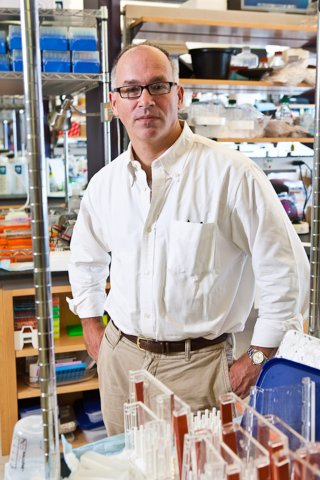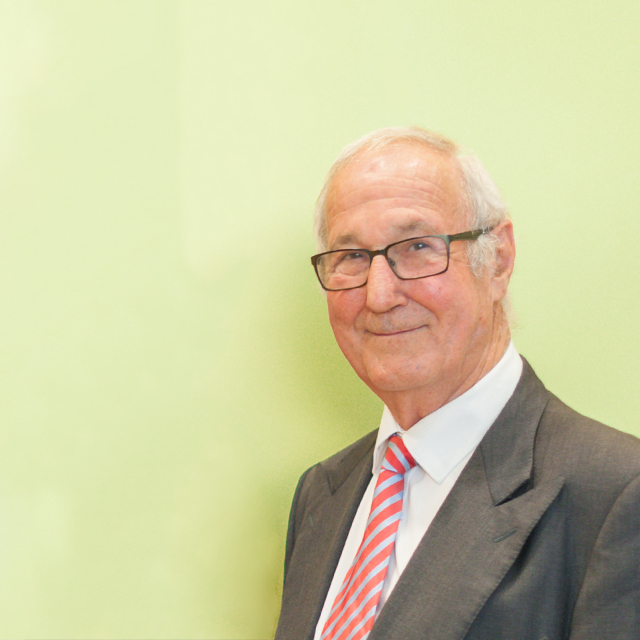Merson Lecture 2013: Cortical Interneurons, Creation, Wiring and Disease
Abstract
A key feature of the central nervous system is its ability to process multimodal sensory information. The ensembles of neurons that permit the performance of such a challenging task are established during development. In the somatosensory cortex, GABAergic interneurons born in the ventral telencephalon undergo protracted migration to reach their final position in the cortex and acquire stereotypic morphologies before contacting their targets, the pyramidal cells and other interneurons. However, the cellular and molecular mechanisms that regulate interneuron maturation are poorly understood. In my talk, I will discuss the mechanisms by which gene expression and neuronal activity regulate the establishment of cortical interneuron subtypes, as well as their requisite laminar targeting and morphology.
These questions will be examined through a combination of mouse genetics and physiology. The development of cortical interneuron diversity appears to arise through two sequential steps. We hypothesize that the initial specification of interneurons occurs at the progenitor stage and utilizes intrinsic genetic programs to divide them into approximately seven “cardinal” groups. Upon becoming postmitotic, immature interneurons migrate and integrate within distinct cortical regions. As they integrate into cortical plate, we have recently demonstrated that activity is selectively required for their selection of cortical laminae and morphological maturation. We suspect they are also receiving further signals that aid in their appropriate regional differentiation. Our hope is that through these approaches the cellular logic underlying circuit maturation can be understood and provide a systematic approach for the visualization and targetted manipulation of interneuron excitability. As we believe that dysfunction of cortical interneurons underlies a variety of affective neurological disorders, our approach provides the means to explore the etiology of brain pathology.
Speaker
 The Fishell laboratory is interested in using molecular genetic approaches to study how cortical interneuron diversity in mammals is generated and how specific subtypes of these neurons functionally integrate into the cerebral cortex during development. Professor Fishell did his PhD at the University of Toronto with Derek van der Kooy, studying the developmental specification of patch (striasome) and matrix cells in the striatum. He continued as a postdoctoral fellow in the laboratory of Dr Mary Beth Hatten at Columbia University. During his postdoctoral years, he examined the molecular basis of glial-guided radial migration of neurons and discovered the first evidence of tangential migration within the telencephalon. He was briefly an assistant professor at the Rockefeller University and then took a position at the NYU’s Developmental Genetics program at the Skirball Institute. Since establishing his own laboratory, Professor Fishell has been interested in understanding the extrinsic and intrinsic mechanisms by which different populations within the telencephalon are specified. Early work in his laboratory focused on the extrinsic signals, most notably Notch and Sonic Hedgehog, which establish regional identity with the telencephalon. This work has increasingly shifted to a focus on intrinsic determinants of cell identity, most notably homeobox transcription factors such as Nkx2.1, Sox6 and Satb1. This work has increasingly focused on cortical interneurons and the mechanisms by which they integrate establish their obligate contacts with the principal excitatory pyramidal neurons. Present work in the laboratory is focused on examining how laminar and areal position within the cerebral cortex influences the connectivity of particular cortical interneuron subtypes.
The Fishell laboratory is interested in using molecular genetic approaches to study how cortical interneuron diversity in mammals is generated and how specific subtypes of these neurons functionally integrate into the cerebral cortex during development. Professor Fishell did his PhD at the University of Toronto with Derek van der Kooy, studying the developmental specification of patch (striasome) and matrix cells in the striatum. He continued as a postdoctoral fellow in the laboratory of Dr Mary Beth Hatten at Columbia University. During his postdoctoral years, he examined the molecular basis of glial-guided radial migration of neurons and discovered the first evidence of tangential migration within the telencephalon. He was briefly an assistant professor at the Rockefeller University and then took a position at the NYU’s Developmental Genetics program at the Skirball Institute. Since establishing his own laboratory, Professor Fishell has been interested in understanding the extrinsic and intrinsic mechanisms by which different populations within the telencephalon are specified. Early work in his laboratory focused on the extrinsic signals, most notably Notch and Sonic Hedgehog, which establish regional identity with the telencephalon. This work has increasingly shifted to a focus on intrinsic determinants of cell identity, most notably homeobox transcription factors such as Nkx2.1, Sox6 and Satb1. This work has increasingly focused on cortical interneurons and the mechanisms by which they integrate establish their obligate contacts with the principal excitatory pyramidal neurons. Present work in the laboratory is focused on examining how laminar and areal position within the cerebral cortex influences the connectivity of particular cortical interneuron subtypes.
About The Merson Lecture
 The annual lecture is named in honour of Dr David Merson, who supported the series in order to promulgate the best neuroscience research and what it has to offer the community in the future. It is given by a prominent, internationally leading neuroscientist whose research is of relevance to laboratories at QBI.
The annual lecture is named in honour of Dr David Merson, who supported the series in order to promulgate the best neuroscience research and what it has to offer the community in the future. It is given by a prominent, internationally leading neuroscientist whose research is of relevance to laboratories at QBI.
Dr Merson is the founder and ex-CEO of Mincom Limited. Since retiring, he has become director of a range of organisations and charitable institutions. He is a member of QBI’s Advisory Board and was the inaugural Chair of the QBI Development Board. His philanthropic sponsorship of this lecture is indicative of a strong community interest in neuroscience and the inspiring research that is being done in the area of neurological and mental diseases.
